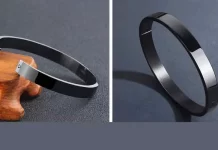The evolution of wireless communication has been nothing short of revolutionary, transforming the way you connect and communicate. Behind the scenes of our seamless connectivity lies the intricate web of wireless backhaul, a critical component that ensures smooth data transmission between cell towers and the broader network. This article will delve into the fascinating world of wire-free backhaul, exploring its evolution from traditional towers to cutting-edge technologies that drive efficiency.
The Foundation of Wireless Connectivity: Traditional Towers and Backhaul Basics
Before you unravel the secrets of wire-free backhaul efficiency, it’s essential to understand its foundational elements. Traditional cell towers have long been the backbone of wireless communication. These towers communicate with mobile devices, forming the first link in the chain. However, the magic happens when these towers are connected through a sophisticated system known as backhaul.
Wireless backhaul refers to connecting these cell towers to the central network, enabling data transfer between the towers and the broader infrastructure. In the early days, backhaul was achieved through physical connections like fibre optics or microwave links. While effective, these methods faced limitations in scalability and cost, paving the way for a new era in wireless communication.
The Leap to Microwave and Fiber Optic Technologies
As the demand for faster and more reliable connectivity surged, the limitations of traditional backhaul methods became apparent. Microwave technology emerged as a game-changer, utilising radio waves to transmit data between towers. This wireless approach significantly improved scalability and reduced installation costs, marking a pivotal moment in the evolution of backhaul efficiency.
Simultaneously, fibre optic technology emerged as a powerful alternative. Fibre optics offered unparalleled speed and bandwidth by transmitting data through thin glass fibres using pulses of light. Fibre optic backhaul became the gold standard for many high-density urban areas, where the demand for data transfer was exceptionally high.
Enter the Era of Small Cells: Revolutionising Backhaul Architecture
The rise of small cells brought about a paradigm shift in backhaul architecture. Small cell miniature base stations deployed in densely populated areas addressed the challenges posed by traditional towers in urban environments. These cells required a more agile and scalable backhaul solution, giving rise to technologies like millimetre-wave wireless links.
Millimetre-wave technology utilises extremely high-frequency bands to transmit data over short distances with exceptional speed. This innovation enabled the deployment of small cells in urban landscapes, ensuring high-speed connectivity in areas with a high concentration of mobile users.
5G and the Demands of the Future: Backhaul Reinvented
5G technology has propelled the need for even more robust and efficient backhaul solutions. 5G promises unprecedented speeds and low latency, demanding a backhaul infrastructure capable of handling the immense data flow. Enter technologies like network slicing and edge computing.
Network slicing involves creating virtualised, independent networks within the broader infrastructure, allowing for customised network parameters based on specific requirements. This not only optimises resource allocation but also enhances overall network efficiency.
Edge computing brings data processing closer to the source, reducing latency and speeding up data transfer. By decentralising processing power, edge computing complements the capabilities of 5G networks, ensuring that the vast amounts of data generated can be efficiently managed and processed.
Summing up, as the world stands at the intersection of technological prowess and insatiable demand for connectivity, the journey of wireless backhaul continues to unfold. From the humble beginnings of traditional towers to the intricate web of 5G and beyond, each phase of evolution has brought you closer to the dream of seamless, ubiquitous connectivity. Continuous innovation in wireless technologies, coupled with a commitment to addressing emerging challenges, will define the success of future communication networks.




















